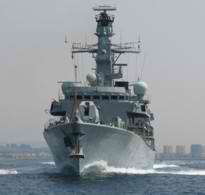Mesothelioma Risk Among Seaman and Sailors Still Hard to Quantify
 Thousands of people who worked aboard commercial ships may be at higher risk for developing malignant mesothelioma.
Thousands of people who worked aboard commercial ships may be at higher risk for developing malignant mesothelioma.
Unfortunately, although the mesothelioma risk for merchant seamen has been acknowledged since the 1970s, there is still little information on how high the risk may be.
That news comes from a new report on commercial seamen and mesothelioma published in the journal Inhalation Toxicology.
Mesothelioma Risk and Commercial Seamen
Seamen are thought to be more prone to pleural mesothelioma because of exposure to asbestos, a common but toxic mineral used primarily as an insulator in many ships built in the early part of the 20th century.
By the mid-1900s, cases of malignant mesothelioma had begun to arise in workers in asbestos product manufacturing and asbestos mining and milling industries.
But, according to David Dodge and Barbara Beck of the environmental and risk sciences consulting firm, Gradient, the danger of asbestos exposure on commercial ships was largely ignored for several more decades.
“We found that attention to the potential health risk of asbestos to merchant seamen began in the mid- to late- 1970s and early 1980s,” write Dodge and Beck.
Asbestos and Mesothelioma: Making the Connection
Although tests found the level of asbestos exposure during routine repairs aboard commercial ships was likely to be low, it was enough to send up red flags for people who worked on these ships.
“Responses to this evolving information served to warn seamen and the merchant shipping industry and led to increased precautions regarding asbestos exposure,” conclude Dodge and Beck.
As rates of lung cancer and pleural mesothelioma among merchant seamen began to climb in the 1990s, some researchers finally began to make a connection between shipboard asbestos exposure and cancer.
Asbestos Use in Ships
Asbestos, which was used throughout both commercial and naval vessels, is a naturally-occurring fibrous mineral. When it becomes airborne, the fibers can lodge in body tissues, causing irritation and inflammation that can eventually cause mesothelioma.
Toxicology experts now know that there is no safe level of exposure to asbestos. People who built both commercial and naval ships, sailed on them, repaired them, or decommissioned them, all face a potentially higher lifetime risk of pleural mesothelioma.
It can take decades for mesothelioma to develop but, once it does, it is extremely difficult to treat and there is no cure. An italian study published earlier this year found that the risk of malignant mesothelioma among shipyard workers remains high even thirty years after their jobs ended.
Even if they are unaware of specific instances of asbestos exposure, people who have worked aboard older commercial or military ships should be aware of the symptoms of mesothelioma and should have regular medical exams.
Source:
Doge, DG and Beck, BD, Historical state of knowledge of the health risks of asbestos posed to seamen on merchant ships, November 10, 2016, Inhalation Toxicology, Epub ahead of print





